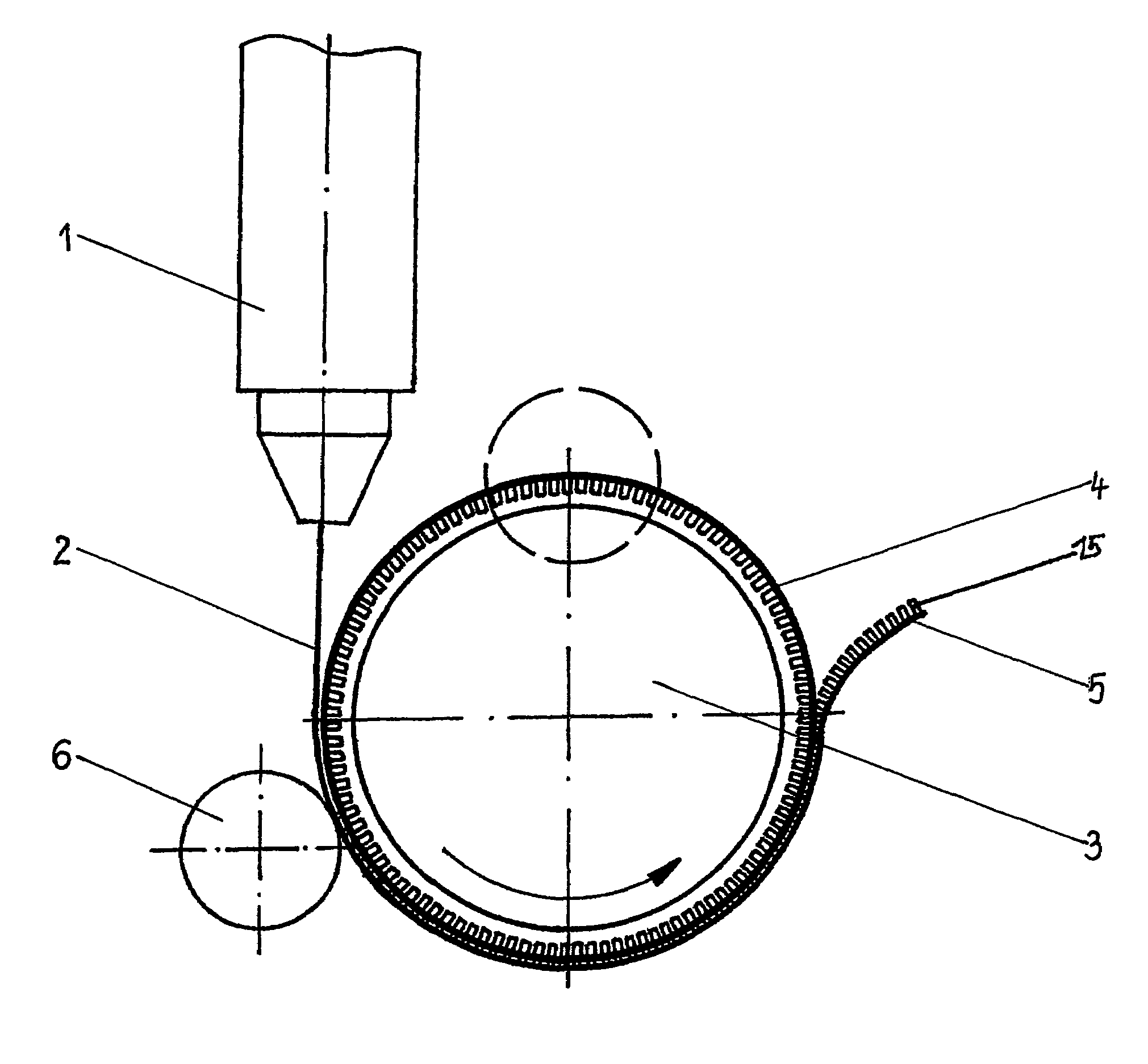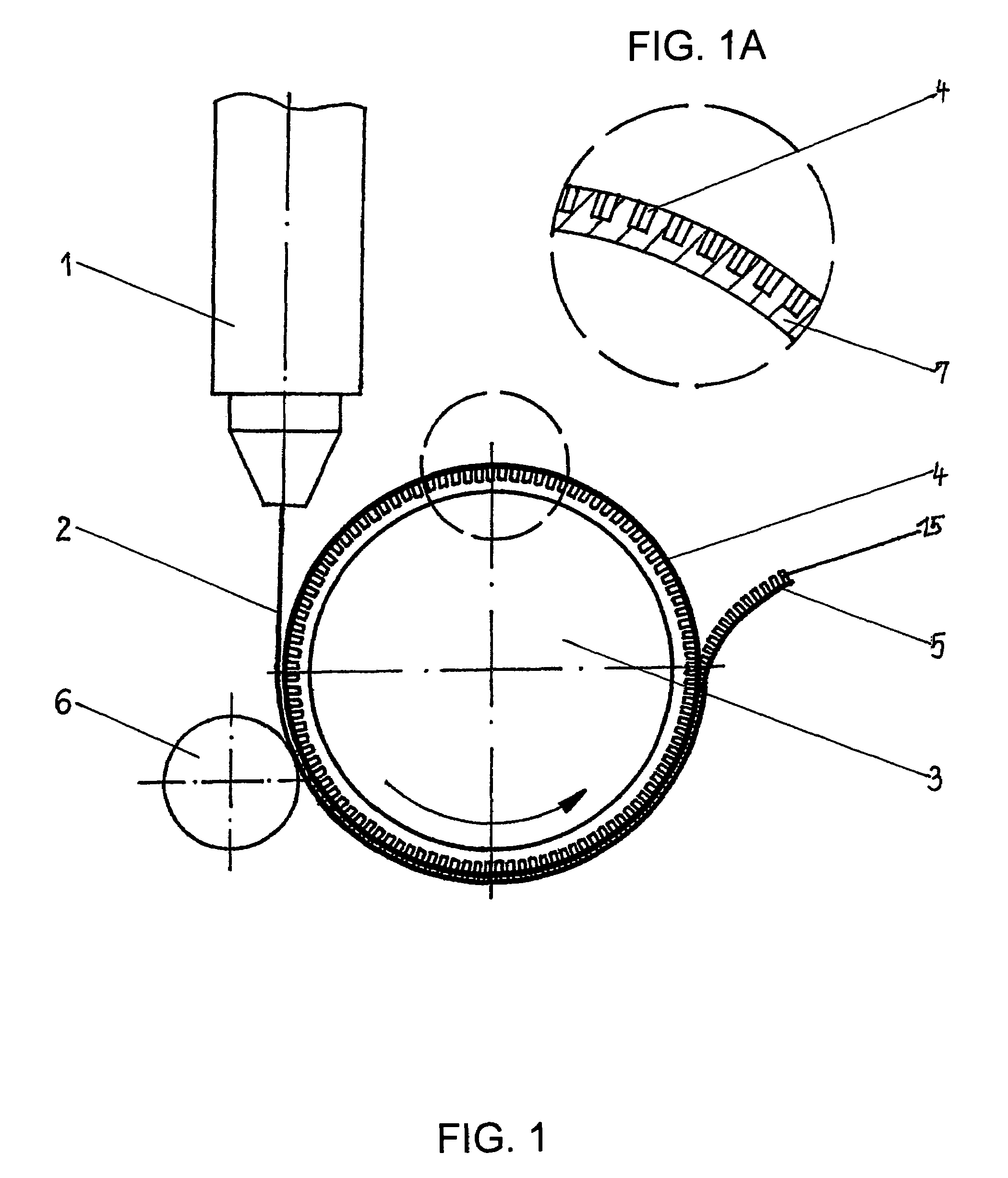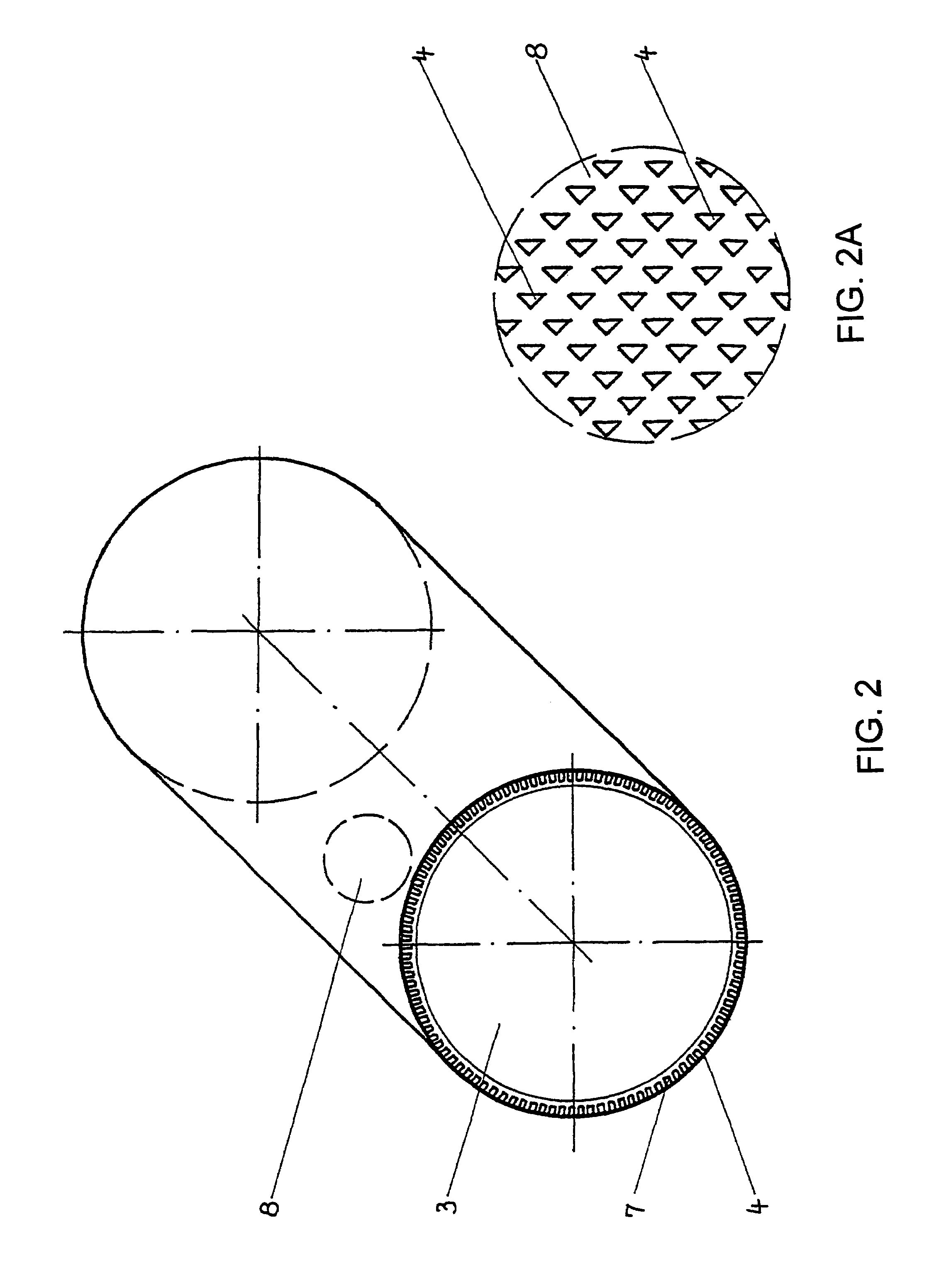Method for producing an adhesive closure element
a technology of closure element and adhesive, which is applied in the field of method of producing an adhesive closure element, can solve the problems of multiple use, and achieve the effect of reducing production costs, improving production efficiency, and reducing production costs
- Summary
- Abstract
- Description
- Claims
- Application Information
AI Technical Summary
Benefits of technology
Problems solved by technology
Method used
Image
Examples
Embodiment Construction
:
[0023]Plastic granulate is fused in an extruder in the conventional way and is fed as a film strip 2 to a thermally controlled forming roller 3 via a sheet die 1. This thermally controlled forming roller 3 is equipped on its outer circumference in a form-fitting manner with a rubber layer 7. For this purpose, the thermally controlled forming roller 3 is expediently roughened for the secure reception of the rubber layer 7. The rubber layer 7, as a sheet-like strip, is provided with pin holes 4, especially evident from the detail 8 of the surface of the forming roller 3, which, however, are designed as a blind hole and therefore do not pierce through the rubber layer 7. The rubber layer 7 possesses, distributed on its circumference, laser-treated orifices as the pin holes 4, which run slightly conically downward, that is to say toward the bottom. According to FIG. 5, multiconfigured end faces of the pin holes 4 are shown by way of example, which are thus put into practice by virtue o...
PUM
| Property | Measurement | Unit |
|---|---|---|
| thickness | aaaaa | aaaaa |
| speeds | aaaaa | aaaaa |
| speeds | aaaaa | aaaaa |
Abstract
Description
Claims
Application Information
 Login to View More
Login to View More - R&D
- Intellectual Property
- Life Sciences
- Materials
- Tech Scout
- Unparalleled Data Quality
- Higher Quality Content
- 60% Fewer Hallucinations
Browse by: Latest US Patents, China's latest patents, Technical Efficacy Thesaurus, Application Domain, Technology Topic, Popular Technical Reports.
© 2025 PatSnap. All rights reserved.Legal|Privacy policy|Modern Slavery Act Transparency Statement|Sitemap|About US| Contact US: help@patsnap.com



